Top 4 Historical Monuments in Uparkot Fort

RANI RANAK DEVI MAHAL
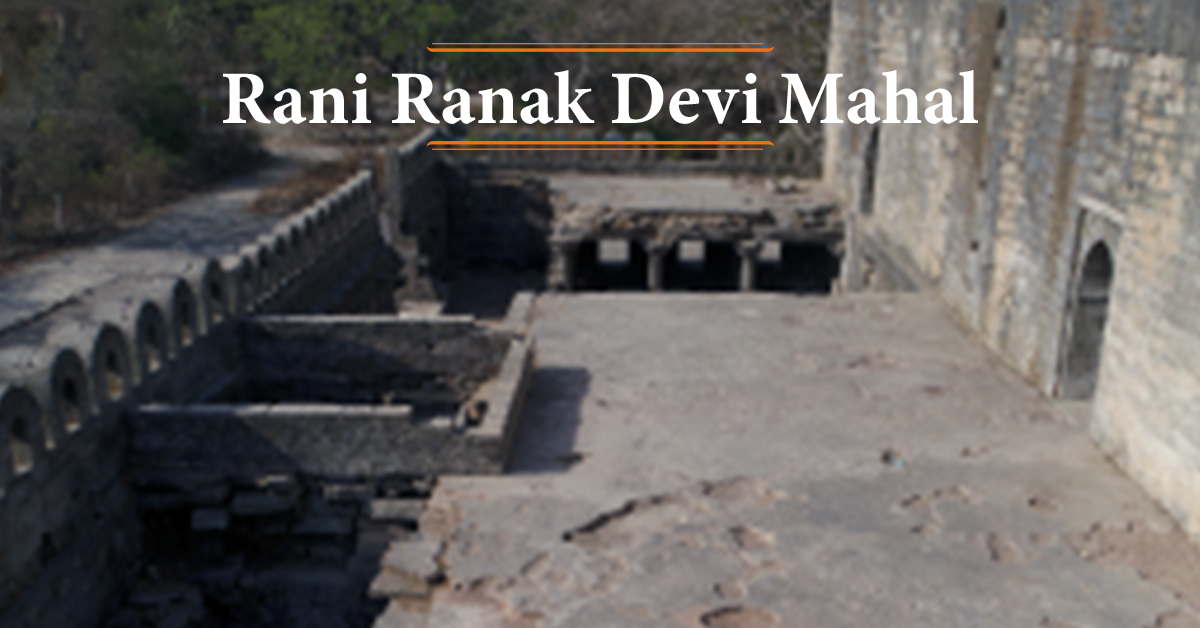
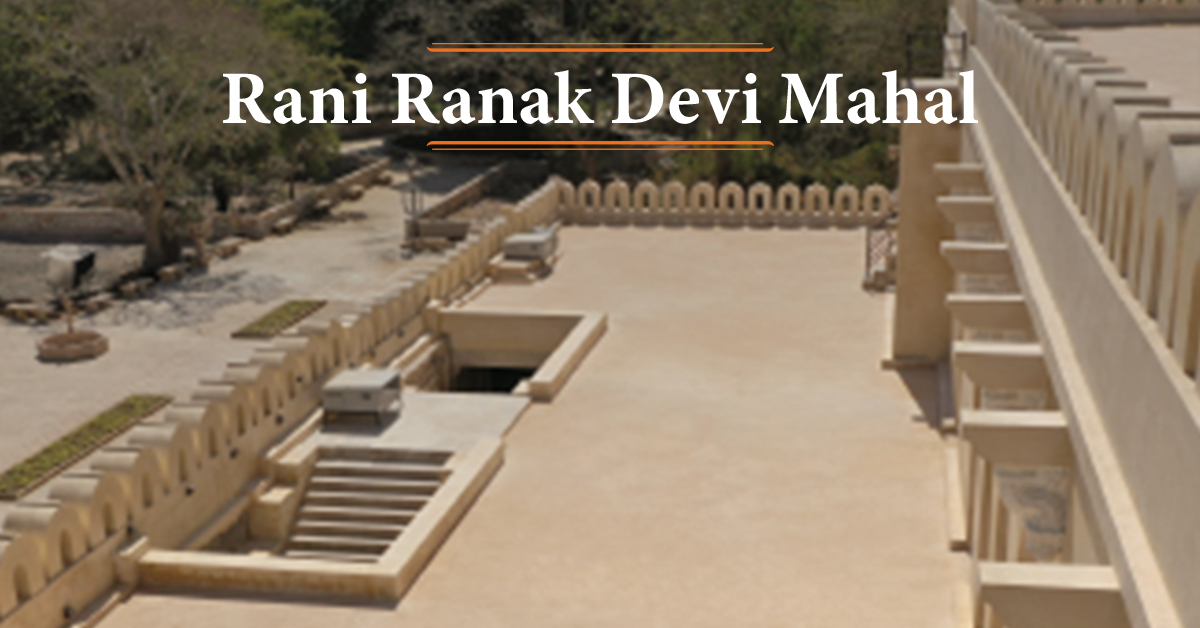
CANNON DISPLAY AREA
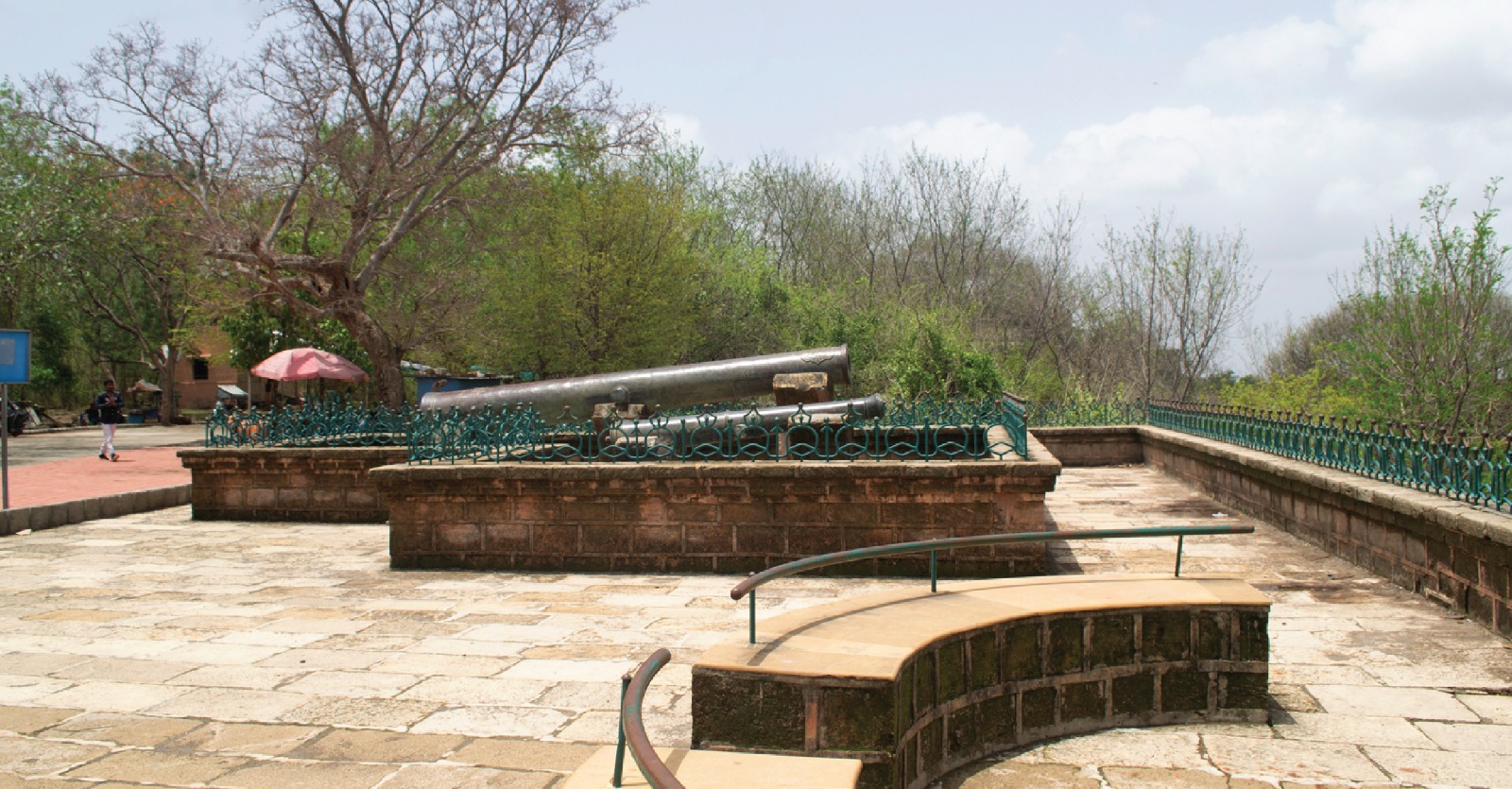
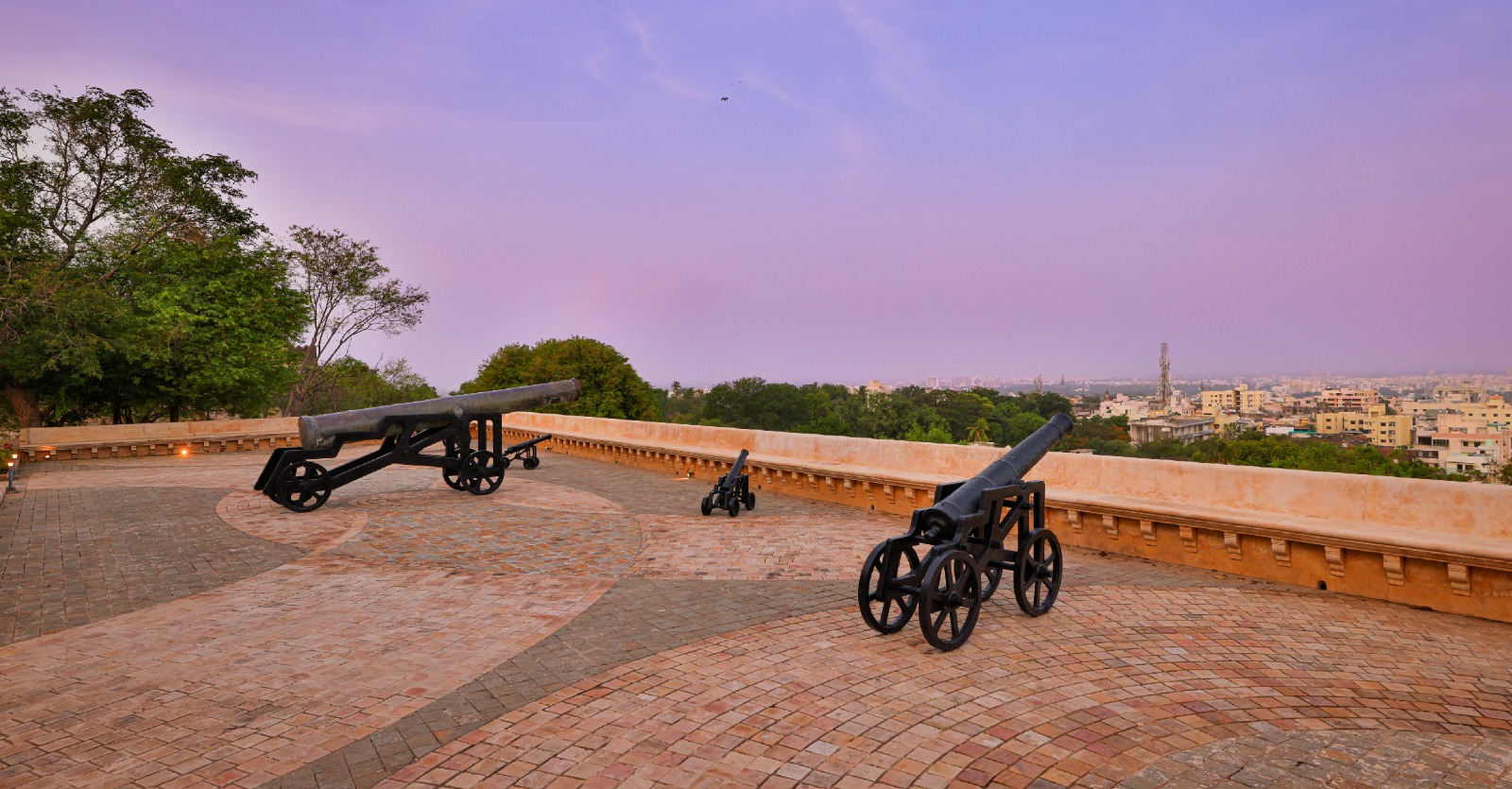
OUTLET TOWER


KADI VAV
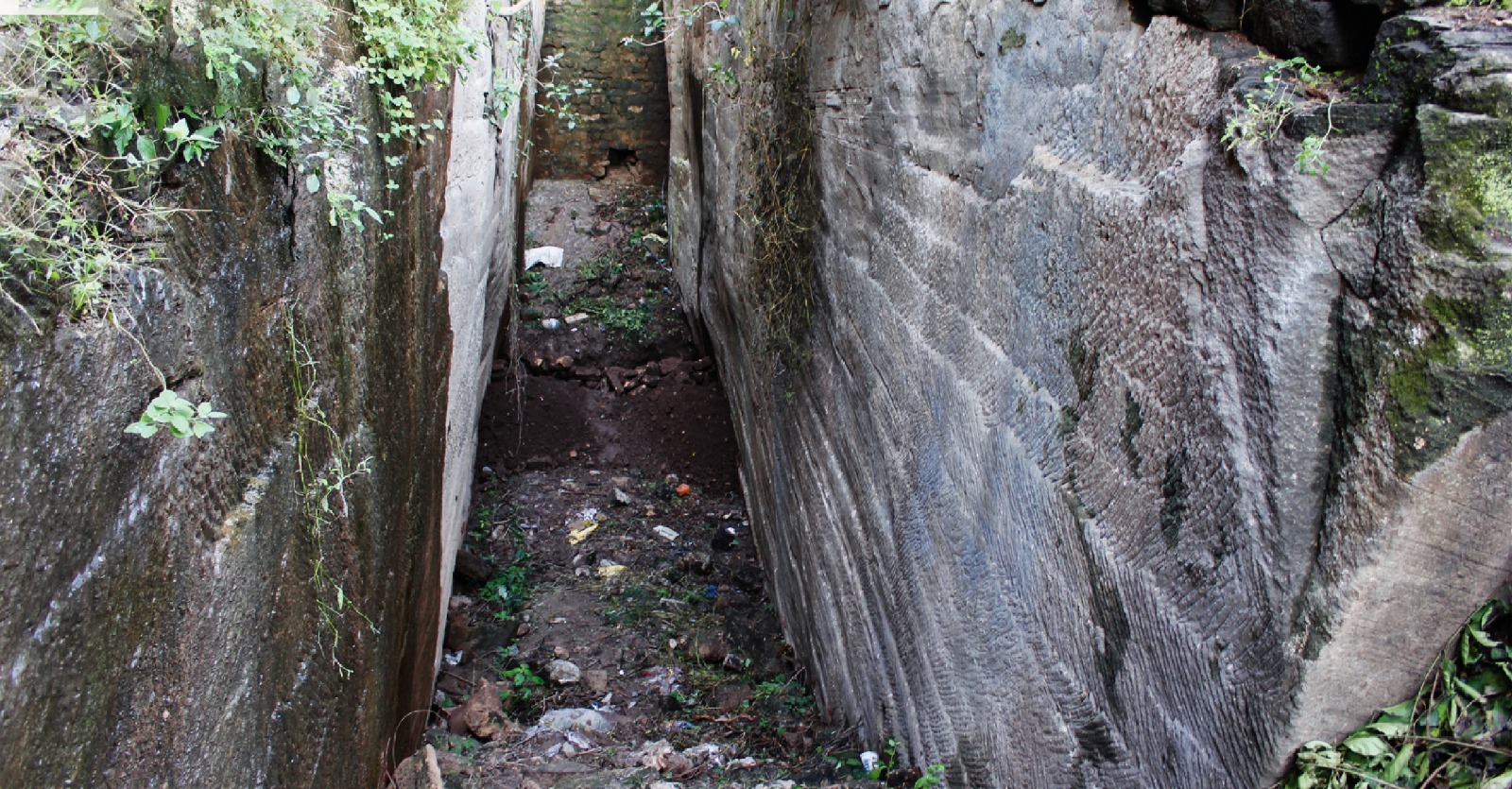

Before

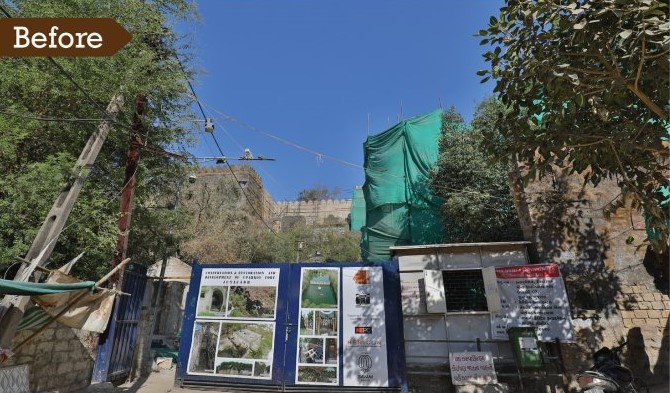
After

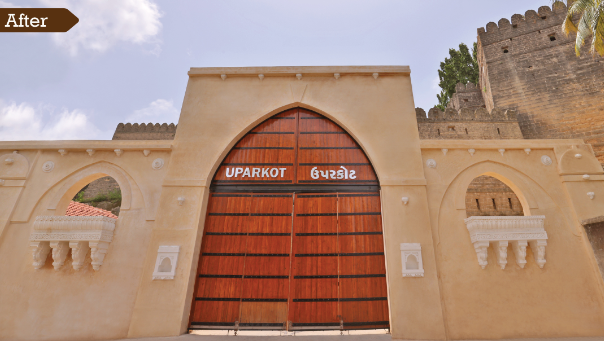
Main Entrance Gate Area

A fort is known by the grandeur of its entrance. At Uparkot Fort, few evidences of the gate were observed which were present. An arch with a Zarokha which was present was replicated on the other side too.
In the central portion, there is a gate embedded in pointed arch which also has a gate. The magnificent timber door was constructed which serves two purposes
One, the additional security to the fort entrance and second retains the historic authenticity of the place as find from the evidences.
The replication was done only after studying and receiving approval from the authoritie
Before

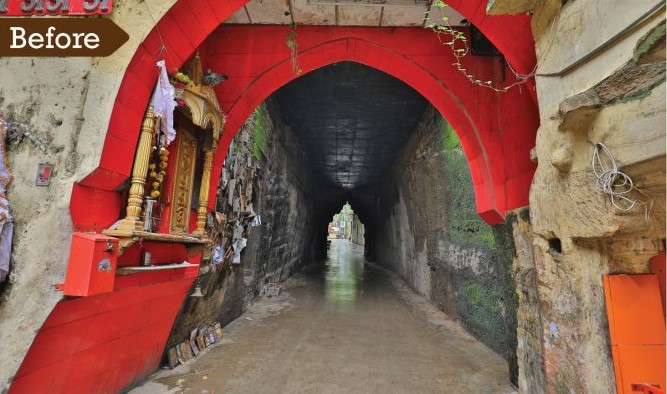
After

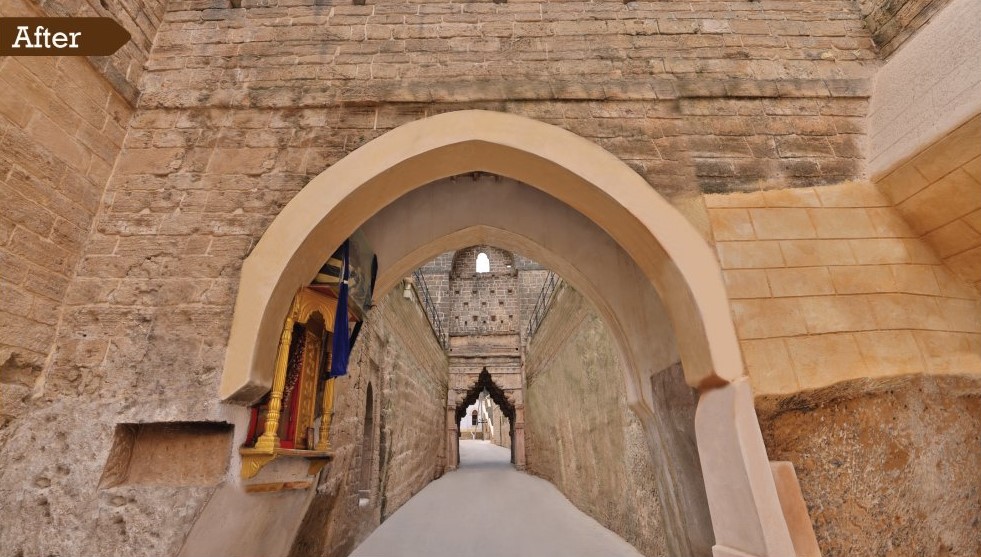
Toran Gate Passage

The narrow passage leading to the Fort once entered through the main gate had an intervened R.C.C. roof, which was a brutal intervention and created a visual hindrance. After consulting the officials, it was decided to remove the slab.
Gradually, the slab was dismantled and original state was retained. The walls surrounding it was cleaned using the water jet mist and lime pointing done as required. The small opening on the side was cleaned off as it was stuffed with debris. The algal and Ficus growth was cleaned off and cleared as it can loosen the masonry.
The removal of the R.C.C. slab has helped achieve the originality of the entrance space. This has enabled the entrance passage to be naturally lit.
Before

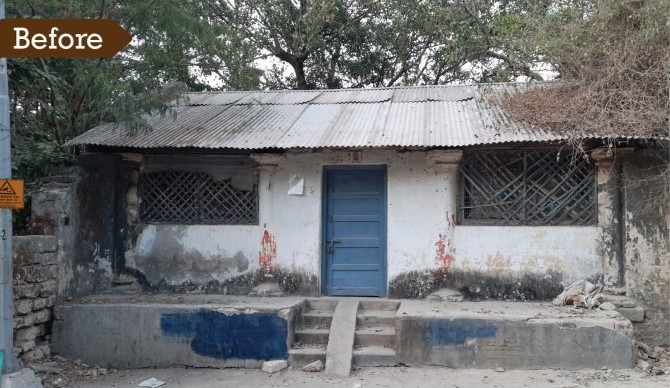
After

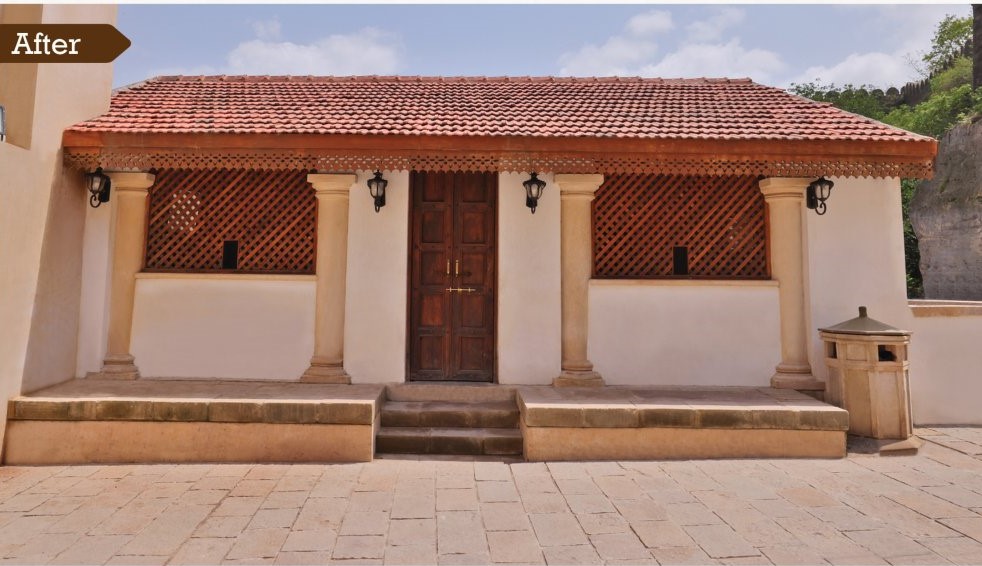
Ticket Counter

The ticket counter which was a redundant structure earlier was proposed to be reused as a ticket counter,
This structure was restored and repairs after which it functions as a ticket counter. The roof of the structure was repaired and replaced with pitch roof.
The wooden trellises were replaced and new timber doors was installed.
The location close to the main entrance makes it an ideal location for the ticket counterBesides,
the surrounding area around was also paved which serves as a spill over area as a waiting space for the visitors to que up while entering the fort
Before

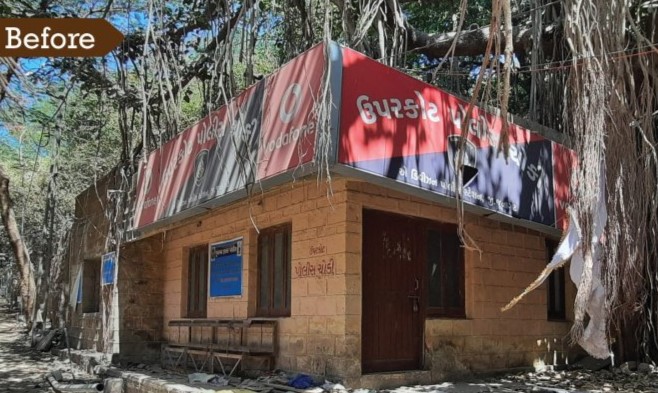
After


Police Chowky / Surveillance Room

The Surveillance room at the junction of the entrance tower was a later addition which was used as a police station.
It was decided to repair the room and use it as a surveillance room to maintain all the CCTVs as well as to house the police officials as required.
The internal spaces were repaired to suite the fittings of the CCTVS
The entire site is fitted with surveillance cameras and its center of control is located here at the surveillance room.
The close monitoring will help to curb any menace and will ensure the safety of the visitors.
Before


After

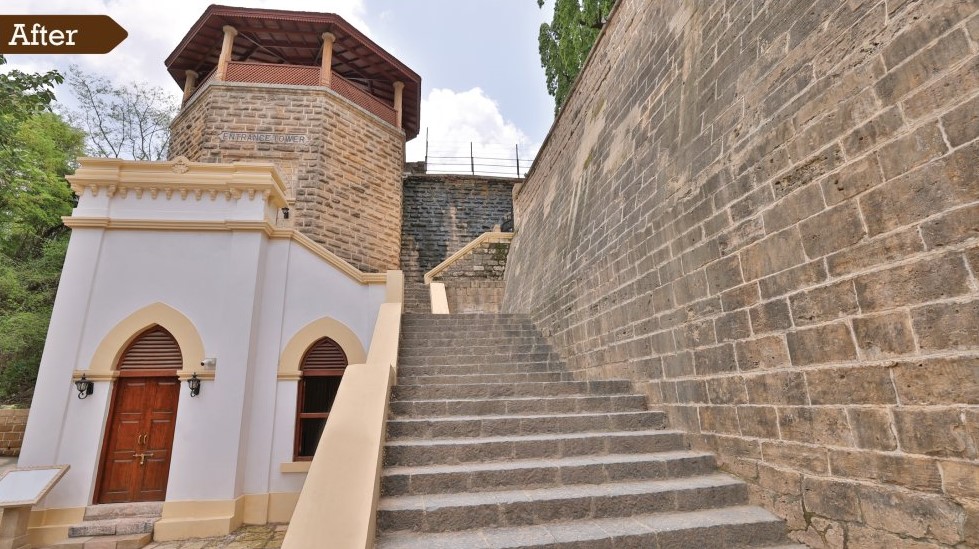
Entrance Tower

The entrance tower at the junction of the children’s play and the road to Ranak Mahal. This tower is a later historic intervention built during the 18th C. at the time of the Rasul Khan water works construction. The masonry of the entrance tower was covered with black crusts due to the algal growth.
The upper portion of the tower had no roof and the stairs often became slippery during the monsoon. The addition of the roof shade using the hexagonal roof was made which covered the spiral stairs.
The location of the entrance tower offers a great view of the lake on one side and the entrance area side on the other. The surrounding areas such as the seat, the stairs and the room beneath were restored.
Lime re-plastering was done as observed from the evidence collection. While, the masonry of the entrance tower was cleaned and washed using the water Jet mist and the room beneath will be used for admin purposes.
Before


After

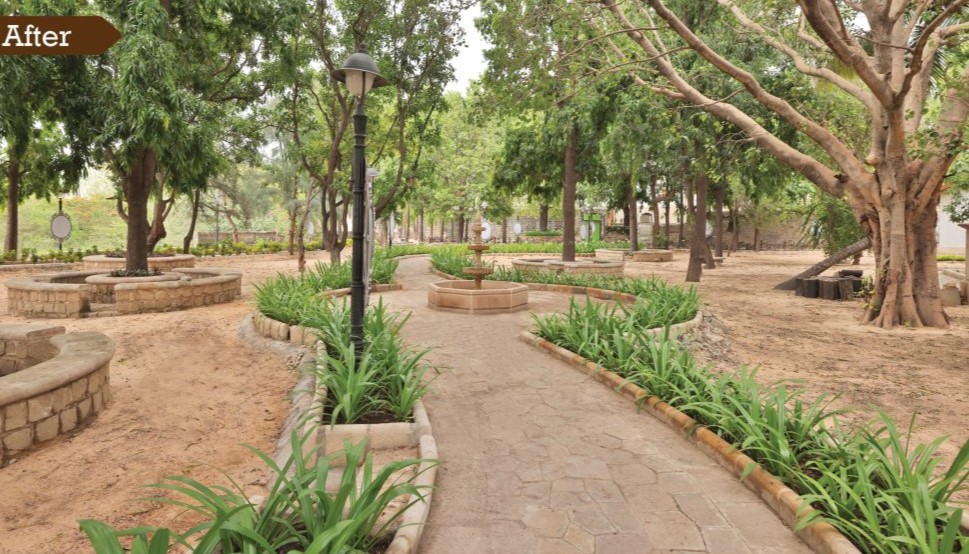
Garden Area and Children's Play Area

The area adjacent to the Filtration plant has a large open space which was designed for a children’s play park. However, the lack of maintenance caused the erratic out of control growth of vegetation all along the ground, whose removal was a task.
After
Also, a few old fountains which were redundant had to be removed. Under the beautification, the landscape was planned inclusive of stone seating around the tree, organized plantation, children’s play area with equipment such as slides and sand pit.
Besides, a small portion next to the garden is designated for the food court to cater to the visitors requirements.
This garden, especially will cater to the local residents who would only want to visit the garden.
The garden is a wonderful space which can provide solace to all types of visitors.
Before


After


Gun Powder Storage Area / Audio-Visual Room

The Gun Powder Storage room located next to the Children’s play area and was critically deteriorated with broken members and shattered roof. The restoration of this structure focused on the structural restoration under which the roof was reconstructed and the damaged structural members were reintroduced.
The structure was under the menace of the vegetation and had to be cleared before starting any work. Today, this structure is an example of adaptive reuse where the audio visual will be displayed to make the visitors aware of the history of the Junagadh and the Uparkot Fort.
The overall restoration of the gun powder room was a challenge which was accomplished after efforts of the team from its shattered condition. The structure has an information board and is well illuminated.
AfterAlso, a few old fountains which were redundant had to be removed. Under the beautification, the landscape was planned inclusive of stone seating around the tree, organized plantation, children’s play area with equipment such as slides and sand pit.
Besides, a small portion next to the garden is designated for the food court to cater to the visitors requirements.
This garden, especially will cater to the local residents who would only want to visit the garden.
The garden is a wonderful space which can provide solace to all types of visitors.
Before

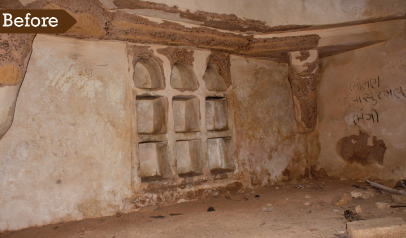
After


Basement of Gun Powder Storage / Audio Visual Room

The Gun Powder Storage room has a basement which was discovered later at the time of cleaning the ficus. The basement was cleared of all the debris and a tunnel like continuous series was discovered.
The condition of the masonry was better as compared to the above superstructure.
During the restoration, the side walls of the basement were lime re-plastered as found in the evidence. The plastering will also take care of the dampness which could be a major concern considering the basement location.
This space can serve as an example of adaptive reuse and can be subjected to a number od usages such as souvenir shop, museum or as an art gallery for temporary displays and exhibitions as it is an enclosed space
Before

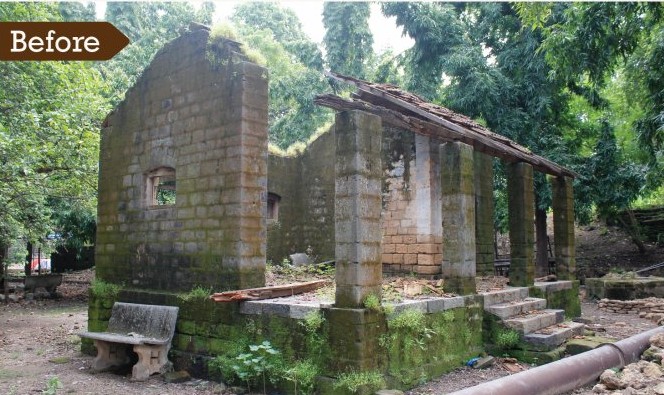
After

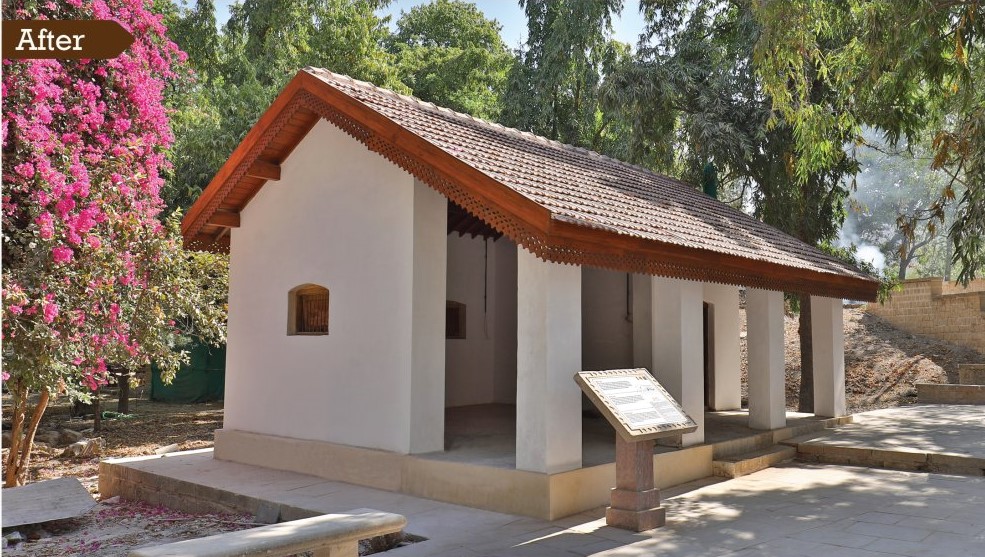
Canteen

The tiny humble structure located opposite to the Audio Visual room was in a terribly deteriorated situation and was a historic intervention.
The structure was restored back structurally after strengthening it.
The pitch roof was reconstructed using the timber rafters and Mangalore tiles. The walls and columns were rebuilt using a mix of the original and new masonry blocks of limestone.
It is proposed to be used as a canteen to cater to the children’s play area and the Audio Visual room. Besides, it has a provision of a small pantry and a sit-out as a resting place for the visitors.
The space is a multipurpose one and is well illuminated to suite any purpose.
Before

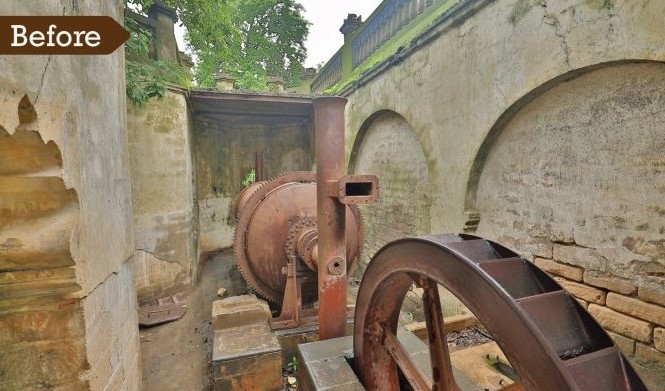
After


Pump Room/ Filtration Plant

The filtration plant and its art work were in a bad state and required restoration. Being constructed out of limestone, the deterioration was severe causing encrustation of black crusts over the limestone and the loss of lime plater in most parts demanded cleaning and lime plastering.
A thorough wash was given to the structure both internally and externally to clean the crusts using the water jet mist and coir brush. The broken balustrades were replicated using the limestone.
While, the entire structure was cleaned and re-plastered and structurally strengthened which helped it achieve its former glory. Post restoration, the structure was illuminated with warm tones
Before

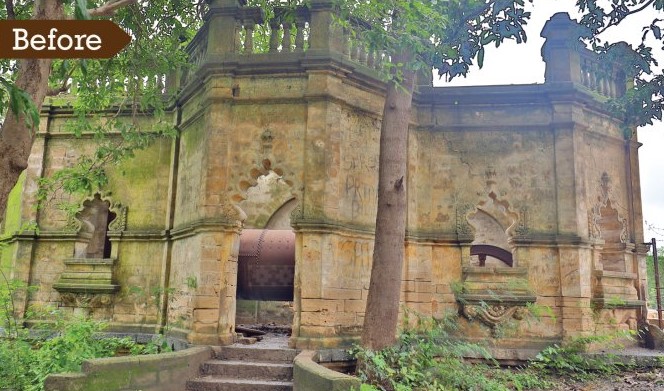
After

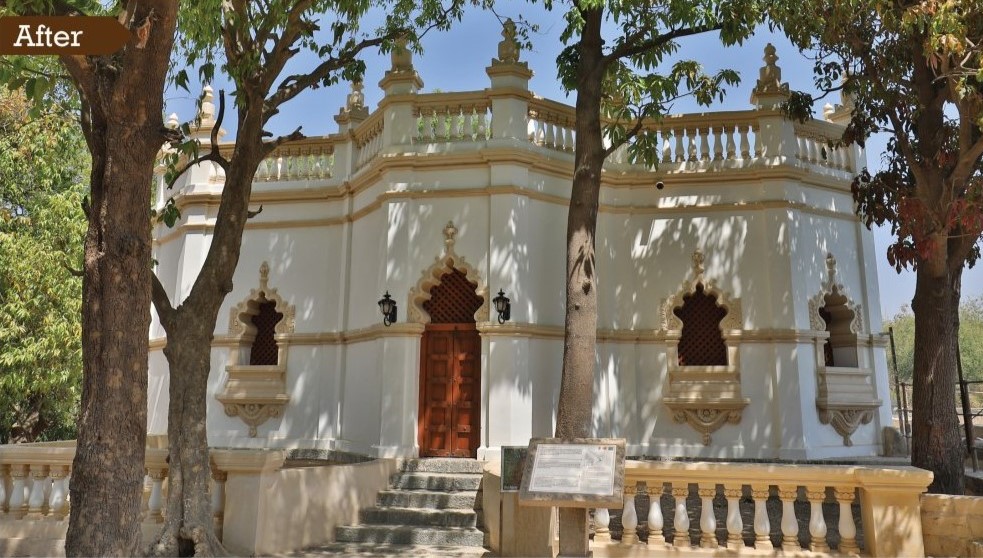
Pump Room/ Filtration Plant

The filtration plant and its art work were in a bad state and required restoration. Being constructed out of limestone, the deterioration was severe causing encrustation of black crusts over the limestone and the loss of lime plater in most parts demanded cleaning and lime plastering.
A thorough wash was given to the structure both internally and externally to clean the crusts using the water jet mist and coir brush. The broken balustrades were replicated using the limestone.
While, the entire structure was cleaned and re-plastered and structurally strengthened which helped it achieve its former glory. Post restoration, the structure was illuminated with warm tones
Before


After

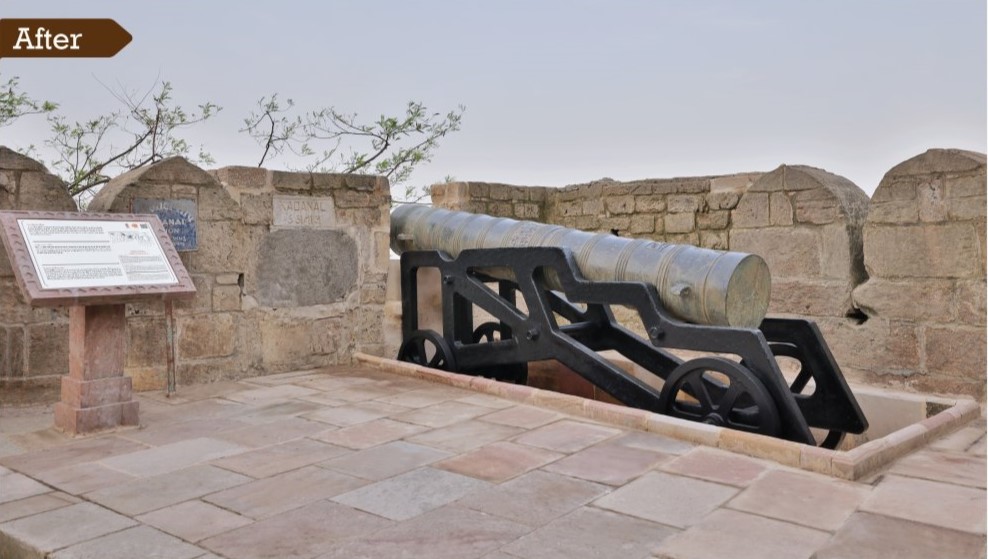
Kadanal Cannon

The Kadanal cannon is a salvaged cannon which was recovered from a battle. The 3.8 M long cannon has ten sets of five rings which gives it a distinctive design. The dia, of the cannon id 56 CM and is made up of an alloy of five metals Arabic inscriptions can be found on the cannon.
Previously, the cannon was placed on stone blocks which seemed in appropriate. Once the cannon was restored back, it was gracefully placed on a custom designed cannon stand which gave it a good holding.This stand was designed out of Cast Iron, sturdy enough to hold the heavy cannon
with pride and aesthetically appealing. Besides it is a information plaque which reads out information to the visitors.
Before


After


Outlet Tower

The Outlet Tower located next to the near end of the Nawabi lake is an interesting element which even functions today since the 20th C.
The Outlet Tower enables the outflow of the water from the lake towards the Junagadh City.
Internally there were clear evidences of the spiral stairs which radiated out the wall but were missing along with the slab levels. Besides, the masonry Internally and externally was damaged and required plastering to save the internal soft limestone from deterioration.
This tower also offers a view of the reservoir and its surroundings. Once the essential task were carried out, the sides of the walls, intemally and externally were re-plastered using lime.
Before


After

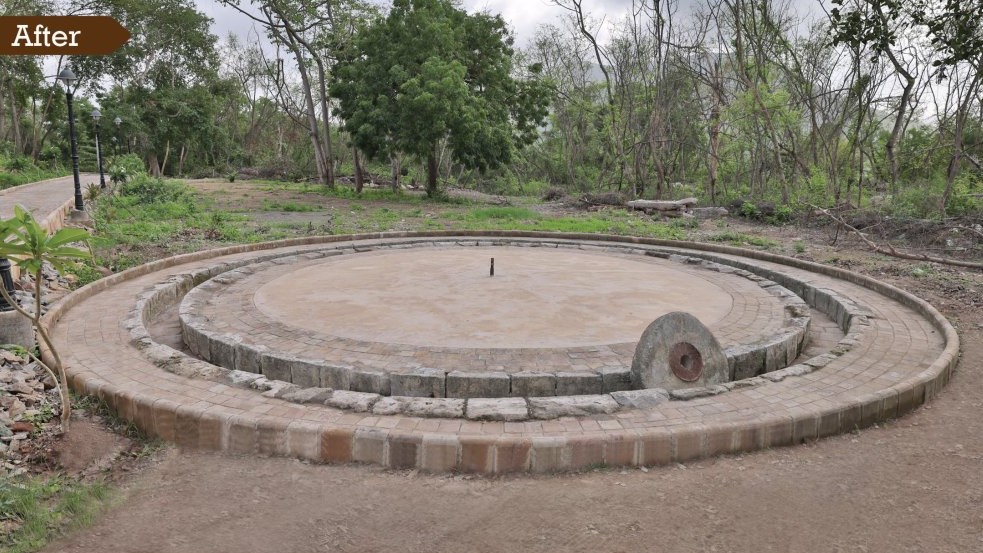
Chakki Area / Lime Grinders

As we move along the fort, we see glances of lime chhaki at different locations which were covered under the vegetation and discovered later when the erratic vegetation was being cleared.
After
Three such lime grinders were found which indicate the usage of the lime material during the construction of various elements on the Fort. These grinders are typically in circular shape and were cleaned to make the visitors understand its significance. The stone flooring in cobble pattern has been laid out which radiates out along the grinder.
The original stone grinder has also been cleaned and placed properly. An information board has been placed next to the grinder which mentions about the information about the lime chhaki. This lime chakki is truly displayed the unique traditional technique which was prevalent historically.
Before

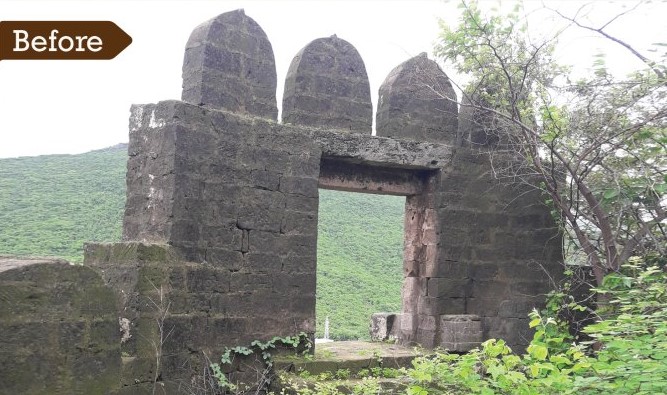
After

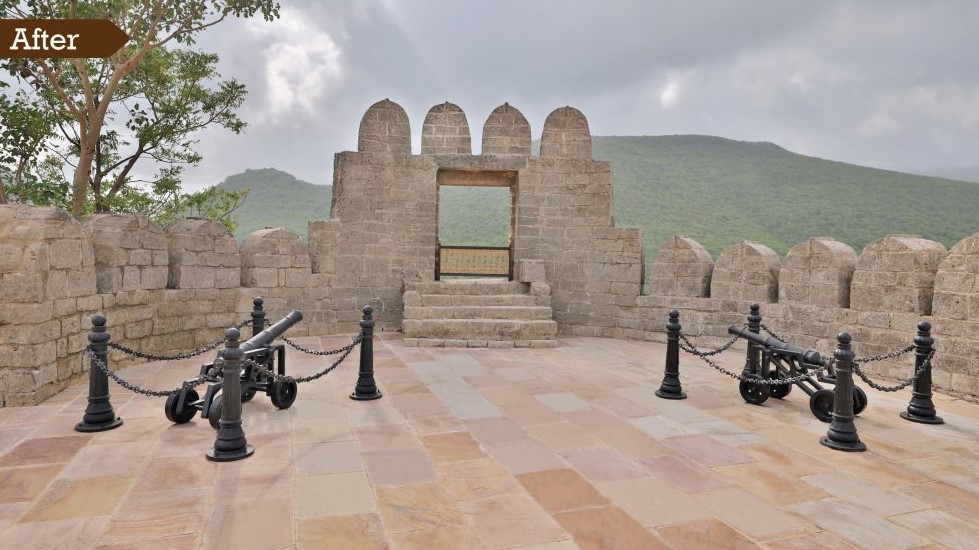
Dhakka Bari

The Dhakka Bari is one of the strategic location which served as punishment point historically. The flooring around had excessive growth of vegetation and required cleaning.
This location is the deepest trough which makes it dangerous for the tourist to access. The masonry of the wall and the merlons around had black stains. These stains were cleaned using water jet mist and vegetation was cleared.
Stone flooring around was relayed using stone slabs. The cannons were placed around for public display which were restored and revitalized. For additional safety, the push point was secured with railings.
The location gives a clear view of the mountain ranges around making it picturesque location for the tourists.
Before


After

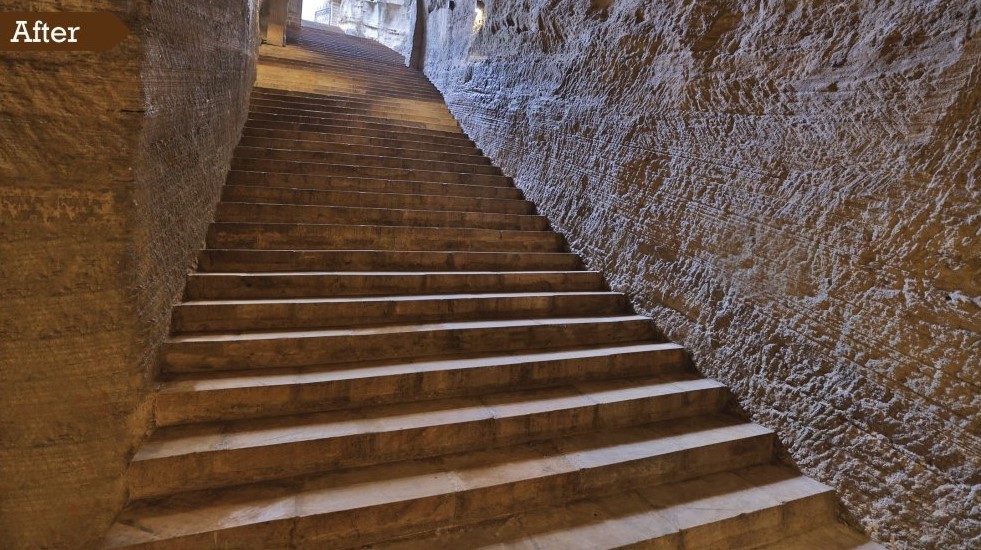
Navghan Kuvo

The Navghan Kuvo holds a spiritual significance and was heavily polluted due to the offerings made by the visitors. This well seven floors underground and was a prototype of the step well design of the 11th C.E
After
The well can be reached by a dwindling series of stairs which ultimately end at the mount of the well. The surroundings of the well were densely covered with vegetation and walls layered with algal growth. The clearing of vegetation and cleaning was a difficult task especially the bird droppings. A thorough cleaning was done using the water jet mist and dry brush.
Dutchman repairs were done at various surfaces where the masonry was missing. A gate is installed at the entrance of the stairs to restrict entry as required.
The Navghan Kuvo is a square well which is the oldest well present on the Uparkot Fort. The masonry surface of the well was damaged and it was repaired using the similar limestone.
However, the challenge was in setting the scaffolding in the well area. A working platform was placed brilliantly over the well to enable the cleaning of the surface. The walls were ingressed with vegetation and layers of algal growth which was cleaned using the water jet mist and coir brush.
Post restoration of the well, the well was covered with nylon safety nets for the protection of the visitors and which also avoid the birds from entering into the well area.
Before


After


Anaj Bhandar

The Anaj Bhandar or the granary are a set of void spaces into the ground used historically to store grains. However, the under maintenance caused severe deterioration and growth of ficus and algal
Besides, the bar covering the voids caused the reptiles to seek shelter and posed a threat to the visitors. During the restoration, scaffolding was placed in each void and were cleaned using water jet mist and brush.
The ficus was removed and algal growth cleared. Later the curbing was done around each void and toughen glass was fixed for safety purposes and visibility into the depth without any risk.
The internal masonry was finished with lime repointing where the masonry was missing.
Before

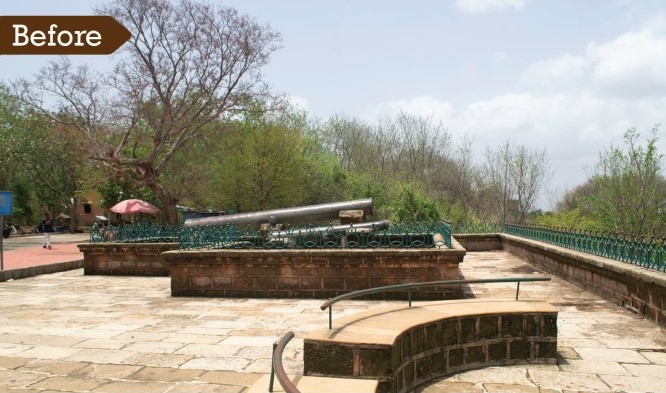
After

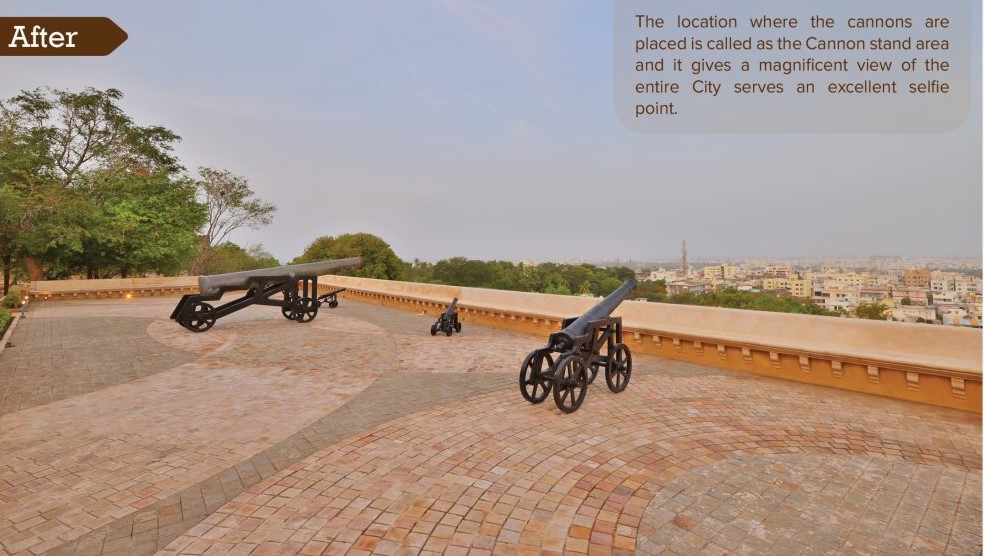
Cannon Display Area

As the Uparkot Fort a hill fort which has witnessed a number of invasions and ultimately required various arms and armaments for its defence. The Nilam and Manek Canon are the two canons which played an important role in the defence and were seized after winning battles. However, the glory of these cannons had become dull due to the under mainte- nance. Besides, its placement on the brick stands seemed inappropriate to highlight its glory. As a part of restoration and beautification, specialized cannon stands were designed and ultimately, these cannons were placed on the stands. Thus, the deteriorated canons were restored, glorified and displayed once again. The previous stone flooring had to be replaced with the new stone flooring as the previous one was damaged and required replacement for usage and beautification. An information board is placed near the cannon and a subtle Illumination enhances and augments the cannon area.
Before

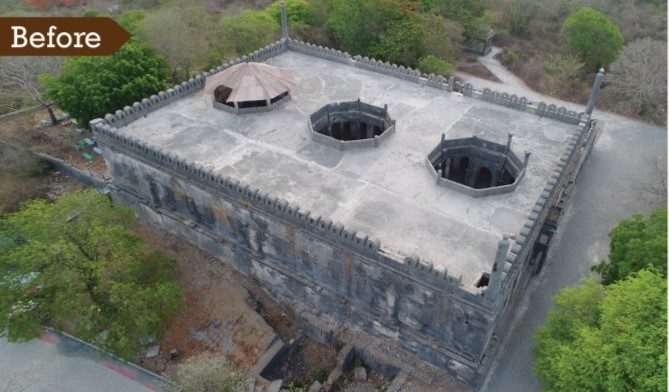
After

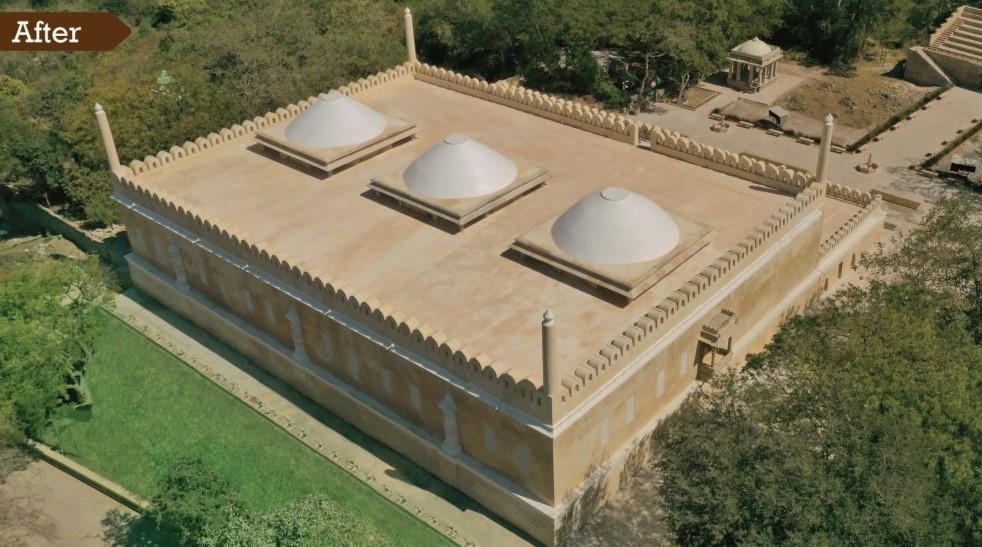
Rani Ranak Devi Mahal

The Rani Ranak Devi Mahal of the Uparkot Fort historically considered as the most important structure. The structure was constructed out of a combination of limestone and sandstone. The under-maintenance and heavy interven- tions had caused the mahal to deteriorate both structurally and farcically.
The restoration focused on structural strengthening using the Helibars and a exhaustive cleaning of the vegetation. and structure surface was done. A number of repair activities such as the masonry numbering and reconstruction, dry brush and water jet mist cleaning, extension of slab and the strengthening of the zarokha.
The dome reconstruction a challenge which was replicated from the historic evidences of the similar dynasties. A museum is setup at the basement which attractively exhibits the artefacts found all along the site during excavation works.
The illumination richly adorns the structure while, one of its wall stretch acts a as backdrop for light and sound show
Before

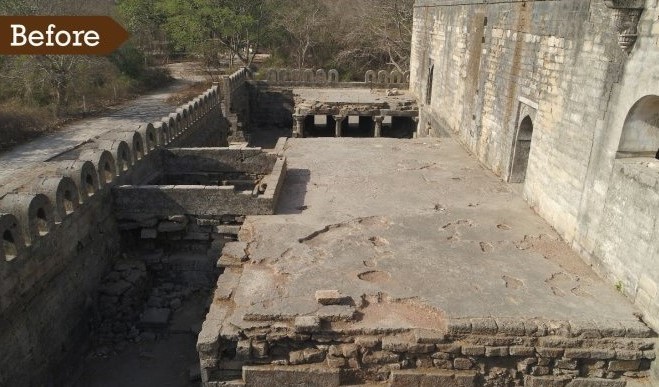
After

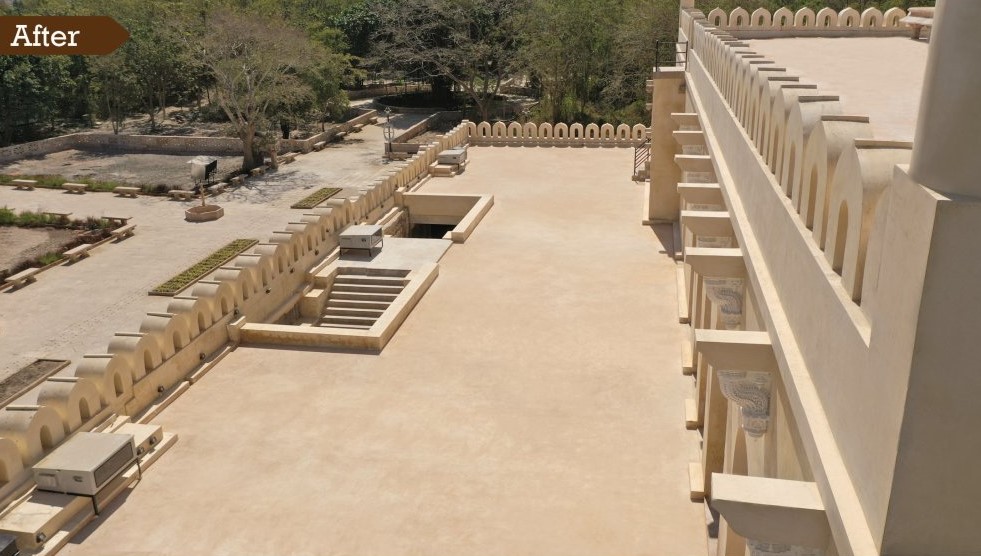
Rani Ranak Devi Mahal

The rear side of the Rani Ranak Devi Mahal was in a deteriorated condition. The space was full of vegetation and algal growth and required a thorough cleaning which was done using dry brush, chemical (as required) and water jet mist. The slab of the Ranak Mahal was in heavily damaged condition.
From the evidence collection, the length of the slab was gauged and the stone slab was extended using similar materials. The arch series was blocked and had to be opened up which retained the authenticity.
The outer surrounding walls were dismantled after numbering in some places and reassembled A museum has been set up under the slab were the artefacts discovered and unearthed during the work were are delightfully placed Several structural elements such as masonry blocks, columns and beams which were lying around, were reused only after considering their strength.
There is a long flight of stairs which leads to the terrace and is supported with a safety railing. The long stretch of wall serves as a backdrop for the light and sound show projection.
Before

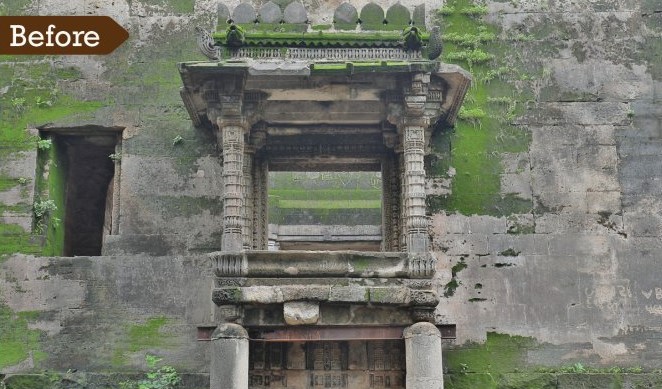
After

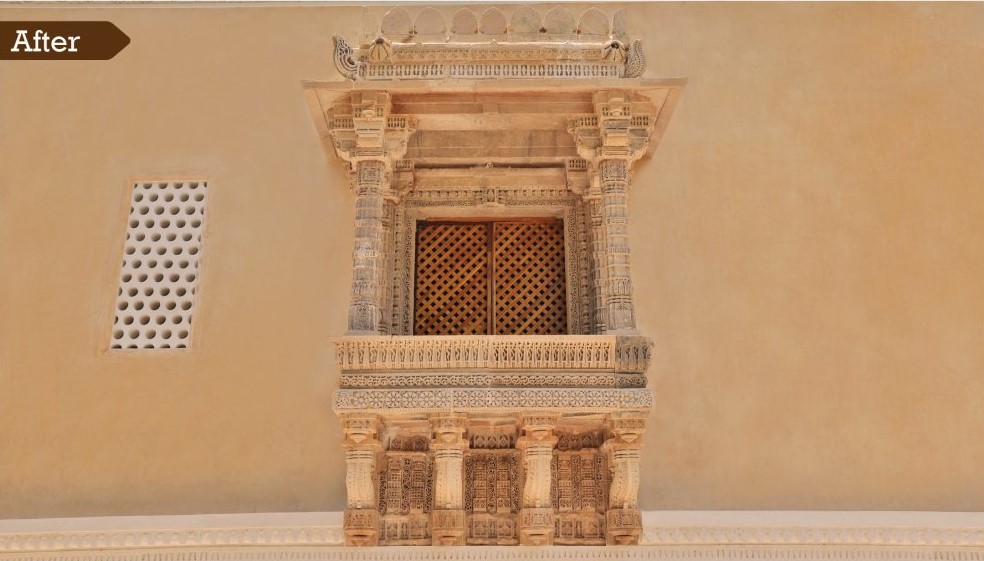
Zarokha of Rani Ranak Devi Mahal

The Zarokha of the Ranak Mahal is a beautifully ornamented element. However, over the years, its strength was affected and it stood wit the help of prop support
Considering the fragile condition of the Zarokha, it was decided with the authorities to number every element and reassemble the Zarakha. Some of the deteriorated portions with art work which were deteri orated were remade using similar stone.
The involvement of local craftsmanship to shape the stone helped to replicate the art work. The missing along with the damaged art work were repaired. The Zarokha and the wall around it was all covered with algal growth which had left black crusts.
The cleaning was exhaustively done to clean the entire Zarokha and its façade with dry brush and water jet mist. The reassembling was a challenging task and was implemented successfully
Before

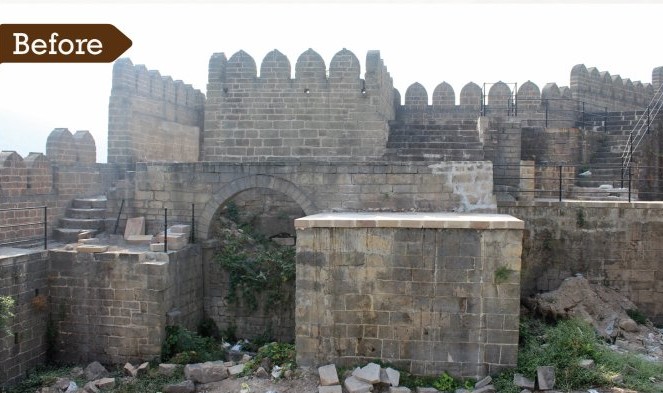
After

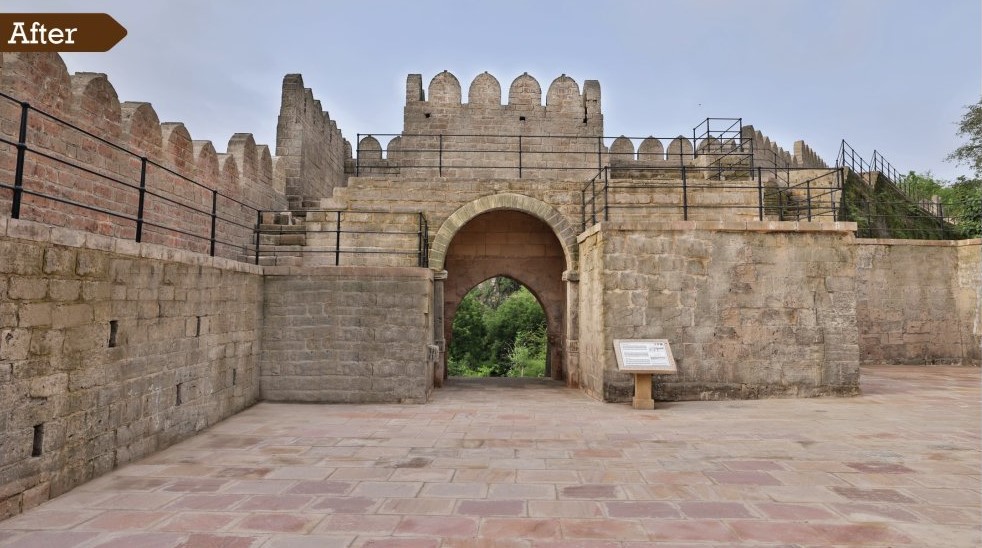
Girnar Gate

The Girnar Gate’s location is indicative of the direction through which the sacred Mount Girnar can be accessed. Interestingly, the arch which was completely covered with the debris were cleared and a new access was discovered.
The arch supporting the rampart was damaged and had severe cracks and unfit for usage. The original masonry was reused as much possible and the new similar introduced using the similar stone as the vegetation growth which was deep penetrated had loosen the masonry which ultimately led to powdering of the masonry blocks.
Once the rampart and the fortification merlons were restored with lime mortar, M.S railings and stone floorings were placed all along the rampart for the safe movements of the visitors.
Before


After

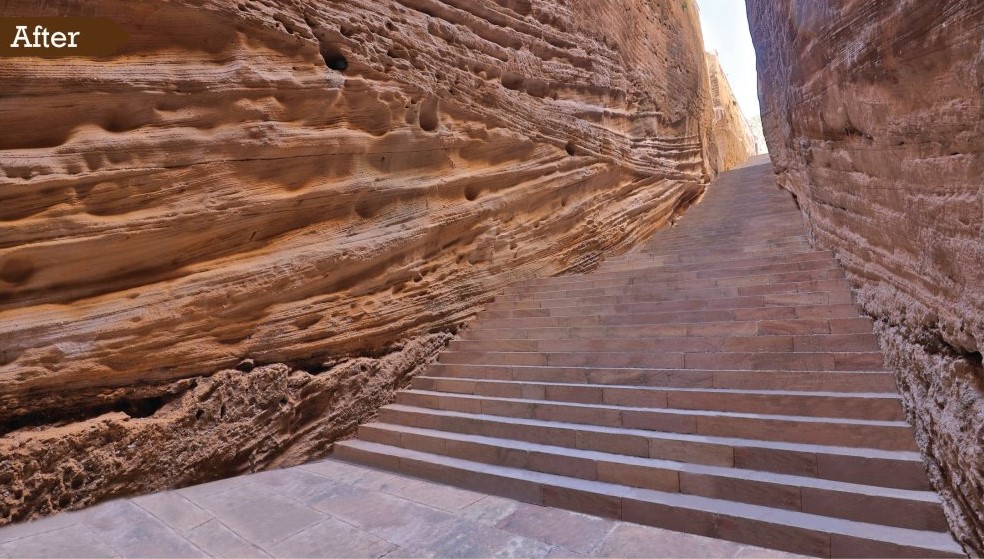
Adi Vav

The Adi Vav which is a 12th C. step well is said to hold a spiritual significance and several devotees visit there. The well is named after the Queen’s maid who was her loyal. However, the access to the well was a difficult task as the steps were severely deteriorated and had algal growth making it difficult and slippery to approach.
As the entire stepwell is carved out of the stone, the narrowness has caused the sides of the well to deteriorate due to winds. The soft stone had caused vegetation growth and the menace of algal growth was another problem faced. During restoration, the vegetation was uprooted and cleaned. The steps were replicated using the sandstone and every tread was replaced.
47
The new steps have now made the access to the well convenient and will avoid the danger of slippery steps ensuring the safety of the visitors.
Before


After

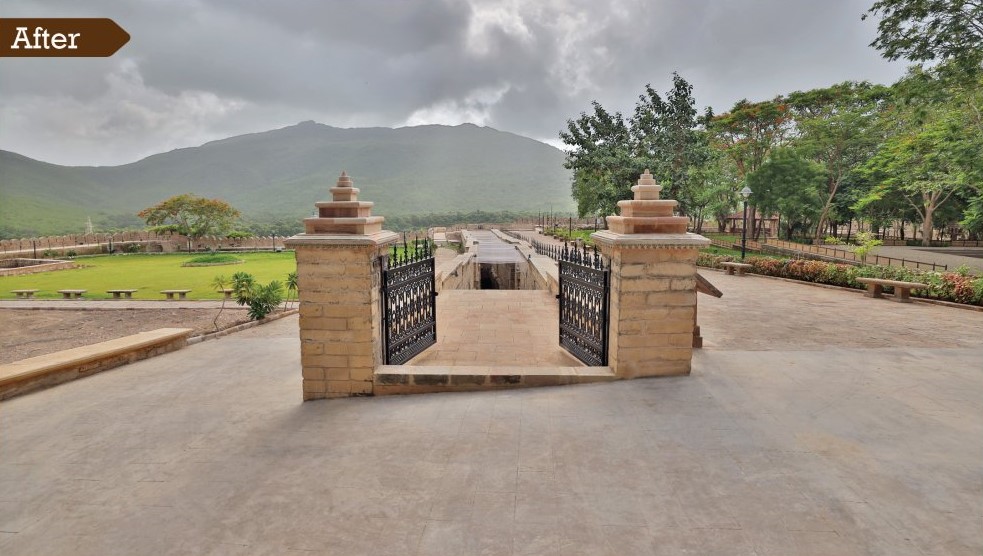
Adi Vav

The Adi Vav which has a spiritual significance, was heavily polluted due to the offerings made by the visitors. It was necessary to carry out the conservation of the waterbody.
Thus, very smartly the silt cleaning was done using the floating platform which enabled the desilting the water pollutants. Once the well water was desilted, a solid platform was places above which the scaffolding stood for the entire length of the well.
The algal growth and the ficus growth was cleaned throughout the length of the stone walls of the well. The stepwell cleaning was a real challenge considering the depth and the well and the height of the well.
Post restoration, a safety net over the diameter of the well has been laid out as well as over the step well has been laid which will restrict nuisance of the bird droppings. For additional safety, a railing around the well and the steps has been done
Before

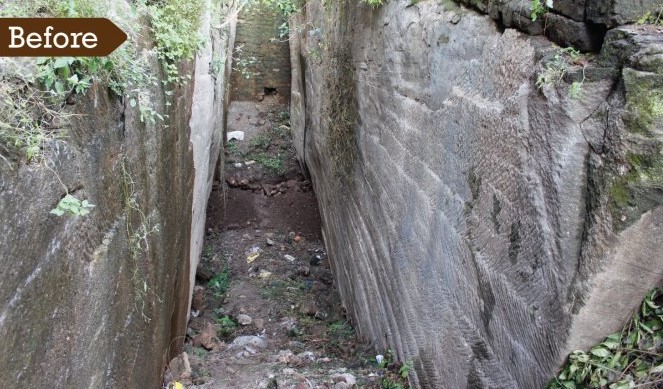
After

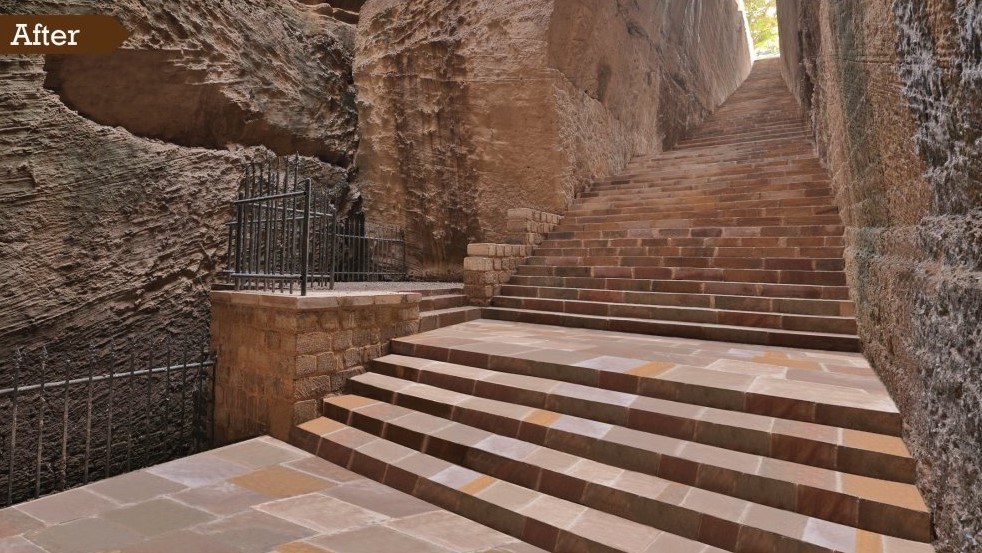
Kadi Vav

The Kadi Vav was discovered surprisingly while the unwanted excess vegetation was being cleared from the site. The entire stretch of the well was filled with soil and its removal was challenging job which required a high number of labours
The 11th C. step well was came out as a surprise and gave a further insight into the master workmanship in the carving out of the step well by the historic masons.
The water drawing mechanism still exists made out of stone and were restored as original. The well was completely dried and the cleaning has helped the well to recharge its ground water table.
A parapet wall was constructed out of limestone on the either side of the well which acts as a retaining was and provides safety to the visitors.
Before

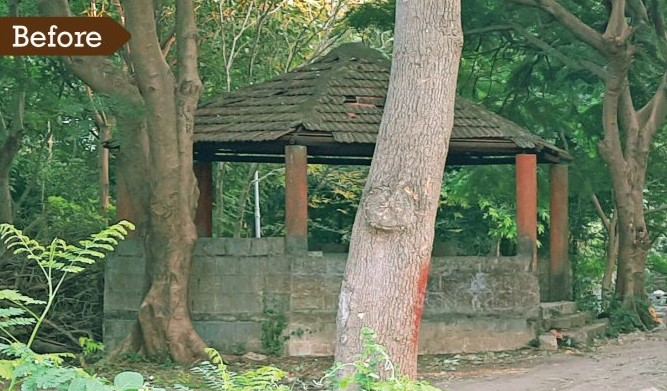
After


Gazebo

A few Gazebos were present in the Adi-Kadi Vav area which had fallen into disrepair due to wear and tear. The Gazebos are a requirement for visitors and as a part of landscape beautification were replicated.
The old Gazebos were dismantle and the new were construed in the same place and additionally a few more were added. Built in the combination of limestone and pitch roof, the gazebos have a sturdy designs and can withstand the weathering for a longer duration.
The gazebos are placed at several places to enable the visitors to rest as required during the exploration of the fort as a resting place in times of rains and sun.
These gazebos are a mark of sustainability as they are completely made up of lime, limestone, timber boarding and Mangalore tiles.
Before

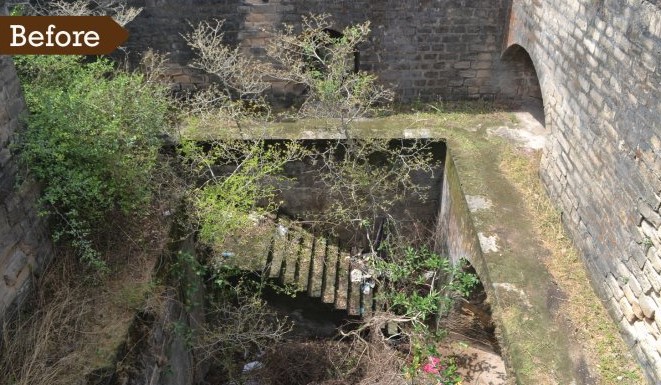
After


Square Bastion - Strategic Chamber

The square bastion located at crucial locations were meant to keep an eye on the enemy for military purpose.
The vegetation growth into the bastion. was erratic and its clearance revealed several aspects such as cracked floors and damaged masonry.
During the restoration, the masonry was cleaned thoroughly to clear the black crusts.
The damaged masonry was repaired using the Dutchman repairs and safety railings were placed all along to safeguard the visitors.
The steps which were also in a severely deteriorated state, was repaired to enable easy access of the visitors.
Before

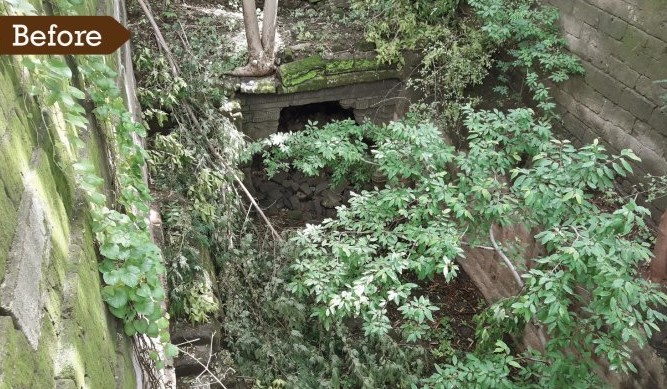
After

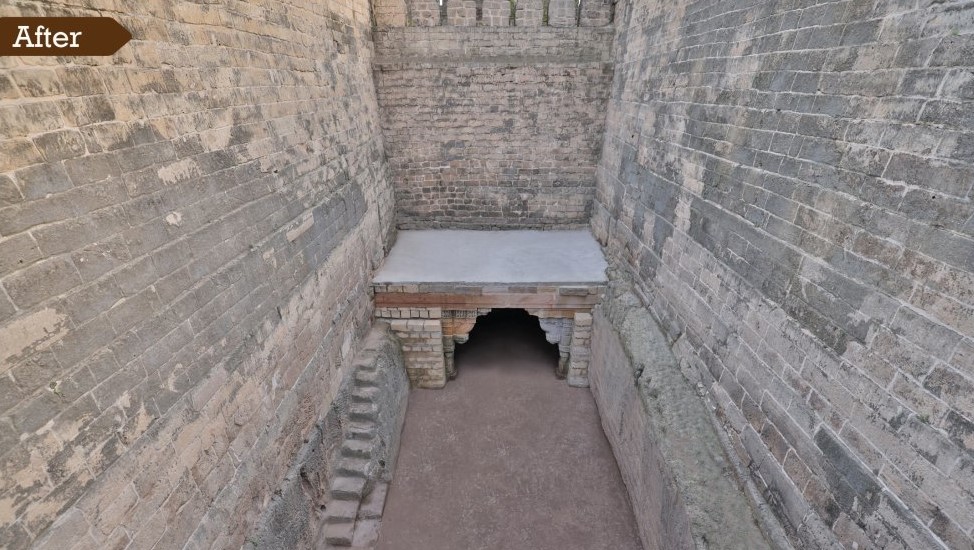
Delhi Gate

The Delhi Gate located along the fortifi- cation was completely covered under vegetation and was unearthed only after the fortification repairs began. As the name suggests, it faces the North direction towards the capital Delhi Very interestingly, there is a an old stone bridge present which is used even today to cross the gate.
The condition of the bridge was also vulnerable and was strengthen to accommodate pedestrian traffic. The masonry was structurally affected owing to the weathering and neglect
The vegetation growth had deep penetrated it root into the masonry which had made it loose ultimately.
The damaged masonry was repaired using the Dutchman repairs and the strengthening of the structural members was done by replacing new member as required. The masonry and the other members were restored using the lime mortar,
Before


After

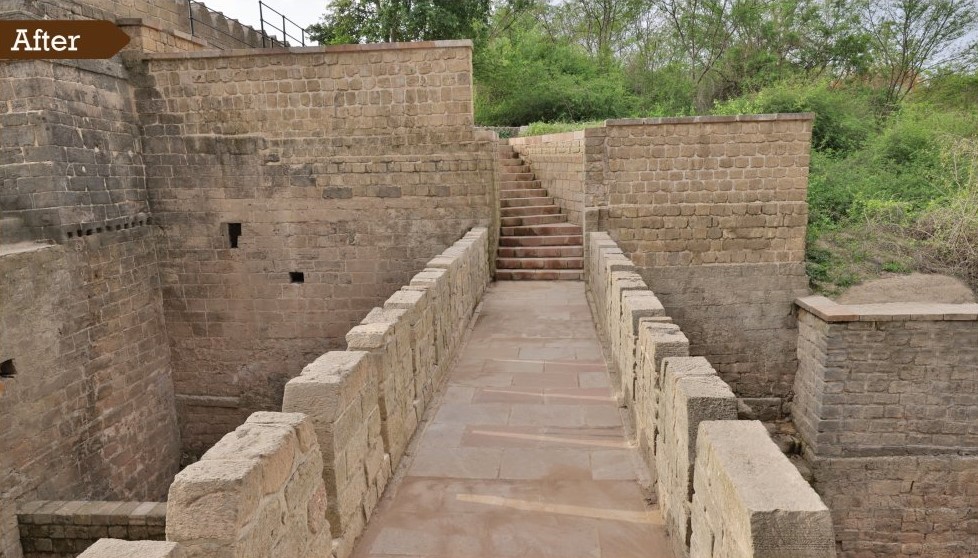
Toran Gate Connect

A narrow passage made up of stone slab connects the fortification near entrance with the children’s play area.
The masonry wall around had dismantled blocks which were reassembled after cleaning.
A small flight of steps that was in a bad condition was also repaired. The amount of vegetation growth was excessive such that the condition of the surrounding masonry was not visible and thus.
the vegetation had to be cleared off to enable the restoration and repair works.
The existing straight wall was an Intervention and the side walls of the connect had merlons fixed. The missing stone block were fixed to match with the original ones by using the similar ones.
Before

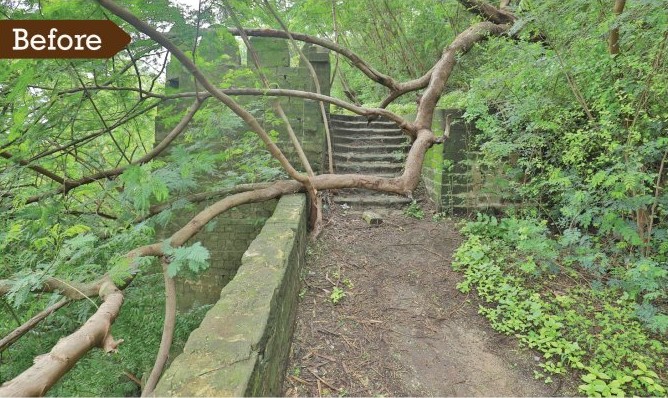
After


Fortification Wall and Rampart

The massive fortification wall which stretches for approximately 3 KM, has a rampart and is lined with merlons made up of limestone. The merlons along the walls were missing and were replicated using the limestone similar to the ones that were present all along the fortification walls.
The merlons were defensive military elements and today act as a safety barrier. The extensive vegetation growth all around the fort was cleared and the algal growth was cleaned using the water jet mist and dry brush.
The ficus had penetrated deep into the walls of the stone. It was only after clearing that the cracks, loose masonry and other defects were observed.
The flooring of the rampart which was missing and was unfit for any movement, were made accessible by laying of the flooring all along the pathway.
Before


After


Entrance Tower Junction

The entrance tower junction which connects the entrance tower, the steps lead to the children’s play area and one end leads to the Rani Ranak Devi Mahal. This junction had several stalls and which were illegal and created mess as they were placed without any planning. These stalls were also a visual hindrance and its visitors littered around. During the restoration, all the algal and vegetation growth were thoroughly cleaned and uprooted as they could loosen the masonry.
This junction leads to the Ranak Mahal on one side and the entrance passage on the other. The stairs lead to the children’s play park and the filtration park. Also, visually the space was cluttered and post restoration, the landscape elements such as benches, direction boards and the litterbins were placed. Today the space is clear and available to accommodate a number of visitors by being the main junction
Before


After

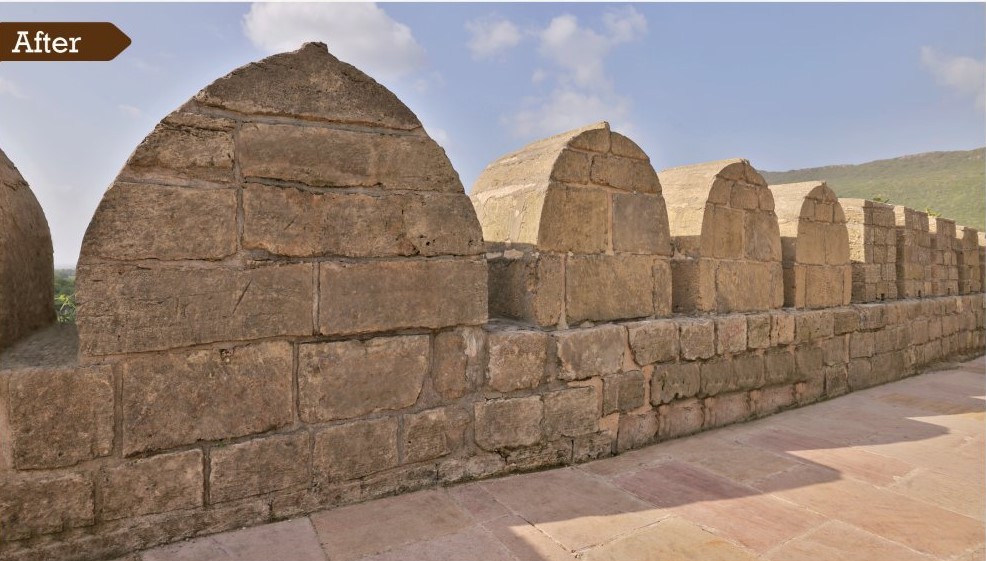
Rampart and Merlons

The fortification wall which is one of the key element of the and was used for defense purposes, today serve as a safety element. For the purpose of restoration and to safeguard the visitors, it is necessary to refix the loose fortification walls. Due to the ingress of water and penetration of the vegetation roots, the overall strength of the masonry was weakened. After thorough cleaning, the algal layer was cleaned and micro defects in the stone blocks were visible.
The refixing of the wall by carefully numbering the blocks and refixing of the same blocks was done, which serves as good example of reusing the old material. New stone blocks using the similar limestone and lime repointing were fixed. Besides, the condition of the rampart flooring was in a shattered state and new stone blocks were placed to pave the way throughout the rampart which enables connection of the rampart throughout the fortification.
